
A nuclear weapon is an explosive device that derives its destructive force from nuclear reactions, either fission or a combination of fission and fusion reactions, producing a nuclear explosion. Both bomb types release large quantities of energy from relatively small amounts of matter.

Nuclear warfare, also known as atomic warfare, is a military conflict or prepared political strategy that deploys nuclear weaponry. Nuclear weapons are weapons of mass destruction; in contrast to conventional warfare, nuclear warfare can produce destruction in a much shorter time and can have a long-lasting radiological result. A major nuclear exchange would likely have long-term effects, primarily from the fallout released, and could also lead to secondary effects, such as "nuclear winter", nuclear famine, and societal collapse. A global thermonuclear war with Cold War-era stockpiles, or even with the current smaller stockpiles, may lead to various scenarios including the extinction of the human species.
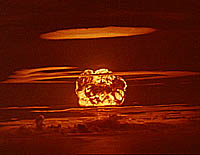
A weapon of mass destruction (WMD) is a biological, chemical, radiological, nuclear, or any other weapon that can kill or significantly harm many people or cause great damage to artificial structures, natural structures, or the biosphere. The scope and usage of the term has evolved and been disputed, often signifying more politically than technically. Originally coined in reference to aerial bombing with chemical explosives during World War II, it has later come to refer to large-scale weaponry of warfare-related technologies, such as biological, chemical, radiological, or nuclear warfare.
A cobalt bomb is a type of "salted bomb": a nuclear weapon designed to produce enhanced amounts of radioactive fallout, intended to contaminate a large area with radioactive material, potentially for the purpose of radiological warfare, mutual assured destruction or as doomsday devices. There is no firm evidence that such a device has ever been built or tested.

A strategic bomber is a medium- to long-range penetration bomber aircraft designed to drop large amounts of air-to-ground weaponry onto a distant target for the purposes of debilitating the enemy's capacity to wage war. Unlike tactical bombers, penetrators, fighter-bombers, and attack aircraft, which are used in air interdiction operations to attack enemy combatants and military equipment, strategic bombers are designed to fly into enemy territory to destroy strategic targets. In addition to strategic bombing, strategic bombers can be used for tactical missions. There are currently only three countries that operate strategic bombers: the United States, Russia and China.

Building on major scientific breakthroughs made during the 1930s, the United Kingdom began the world's first nuclear weapons research project, codenamed Tube Alloys, in 1941, during World War II. The United States, in collaboration with the United Kingdom, initiated the Manhattan Project the following year to build a weapon using nuclear fission. The project also involved Canada. In August 1945, the atomic bombings of Hiroshima and Nagasaki were conducted by the United States, with British consent, against Japan at the close of that war, standing to date as the only use of nuclear weapons in hostilities.
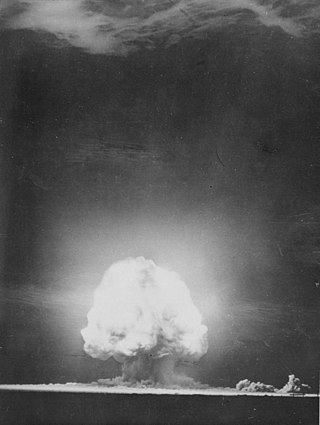
Technology played a significant role in World War II. Some of the technologies used during the war were developed during the interwar years of the 1920s and 1930s, much was developed in response to needs and lessons learned during the war, while others were beginning to be developed as the war ended. Many wars have had major effects on the technologies that we use in our daily lives, but World War II had the greatest effect on the technology and devices that are used today. Technology also played a greater role in the conduct of World War II than in any other war in history, and had a critical role in its outcome.
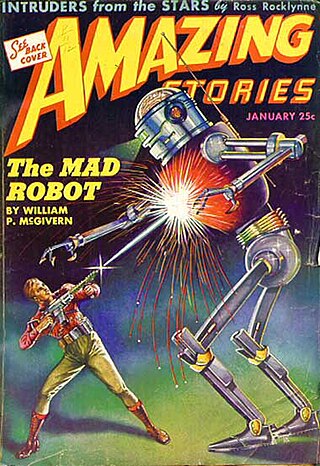
Strange and exotic weapons are a recurring feature in science fiction. In some cases, weapons first introduced in science fiction have been made a reality; other science-fiction weapons remain purely fictional, and are often beyond the realms of known physical possibility.

The nuclear arms race was an arms race competition for supremacy in nuclear warfare between the United States, the Soviet Union, and their respective allies during the Cold War. During this same period, in addition to the American and Soviet nuclear stockpiles, other countries developed nuclear weapons, though no other country engaged in warhead production on nearly the same scale as the two superpowers.
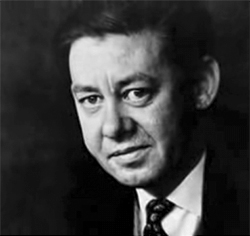
Peter Bryan George was a Welsh author, most famous for the 1958 Cold War thriller novel Red Alert, published initially with the title Two Hours to Doom and written using the pseudonym Peter Bryant. The book was the inspiration for Stanley Kubrick's film Dr. Strangelove or: How I Learned to Stop Worrying and Love the Bomb.

Since their public debut in August 1945, nuclear weapons and their potential effects have been a recurring motif in popular culture, to the extent that the decades of the Cold War are often referred to as the "atomic age".

The United States was the first country to manufacture nuclear weapons and is the only country to have used them in combat, with the bombings of Hiroshima and Nagasaki in World War II. Before and during the Cold War, it conducted 1,054 nuclear tests, and tested many long-range nuclear weapons delivery systems.

Although Germany has the technical capability to produce weapons of mass destruction (WMD), since World War II it has refrained from producing those weapons. However, Germany participates in the NATO nuclear weapons sharing arrangements and trains for delivering United States nuclear weapons. Officially, 20 US-nuclear weapons are stationed in Büchel, Germany. It could be more or fewer, but the exact number of the weapons is a state secret.

Atomic spies or atom spies were people in the United States, the United Kingdom, and Canada who are known to have illicitly given information about nuclear weapons production or design to the Soviet Union during World War II and the early Cold War. Exactly what was given, and whether everyone on the list gave it, are still matters of some scholarly dispute. In some cases, some of the arrested suspects or government witnesses had given strong testimonies or confessions which they recanted later or said were fabricated. Their work constitutes the most publicly well-known and well-documented case of nuclear espionage in the history of nuclear weapons. At the same time, numerous nuclear scientists wanted to share the information with the world scientific community, but this proposal was firmly quashed by the United States government.

World War III, sometimes abbreviated to WWIII, is a common theme in popular culture. Since the 1940s, countless books, films, and television programmes have used the theme of nuclear weapons and a third global war. The presence of the Soviet Union as an international rival armed with nuclear weapons created persistent fears in the United States and vice versa of a nuclear World War III, and popular culture at the time reflected those fears. The theme was also a way of exploring a range of issues beyond nuclear war in the arts. U.S. historian Spencer R. Weart called nuclear weapons a "symbol for the worst of modernity."
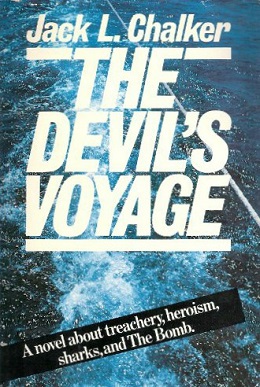
The Devil's Voyage is a historical novel by science fiction writer Jack Chalker. It describes the final voyage of the heavy cruiser USS Indianapolis, which was sunk during World War II in the Pacific by Japanese submarine action, with the loss of many of the initial survivors to sharks.
A tectonic weapon is a hypothetical device or system which could trigger earthquakes, volcanic eruptions, or other seismic events in specified locations by interfering with the Earth's natural geological processes. It was defined in 1992 by Aleksey Vsevolodovich Nikolayev, corresponding member of the Russian Academy of Sciences: "A tectonic or seismic weapon would be the use of the accumulated tectonic energy of the Earth's deeper layers to induce a destructive earthquake". He added "to set oneself the objective of inducing an earthquake is extremely doubtful." Though no such device is known to have been built, tectonic weapons have occasionally appeared as plot devices in works of fiction.

Archangel, also written as William Gibson Archangel or William Gibson's Archangel, is a five-issue limited series comic book that was created by William Gibson and Michael St. John Smith, written by William Gibson, illustrated by Butch Guice and story-edited by Michael Benedetto. It is Gibson's first comic book series, which is set in an alternative version of 2016 in which the Vice President of America travels back in time to 1945 to secure power.















